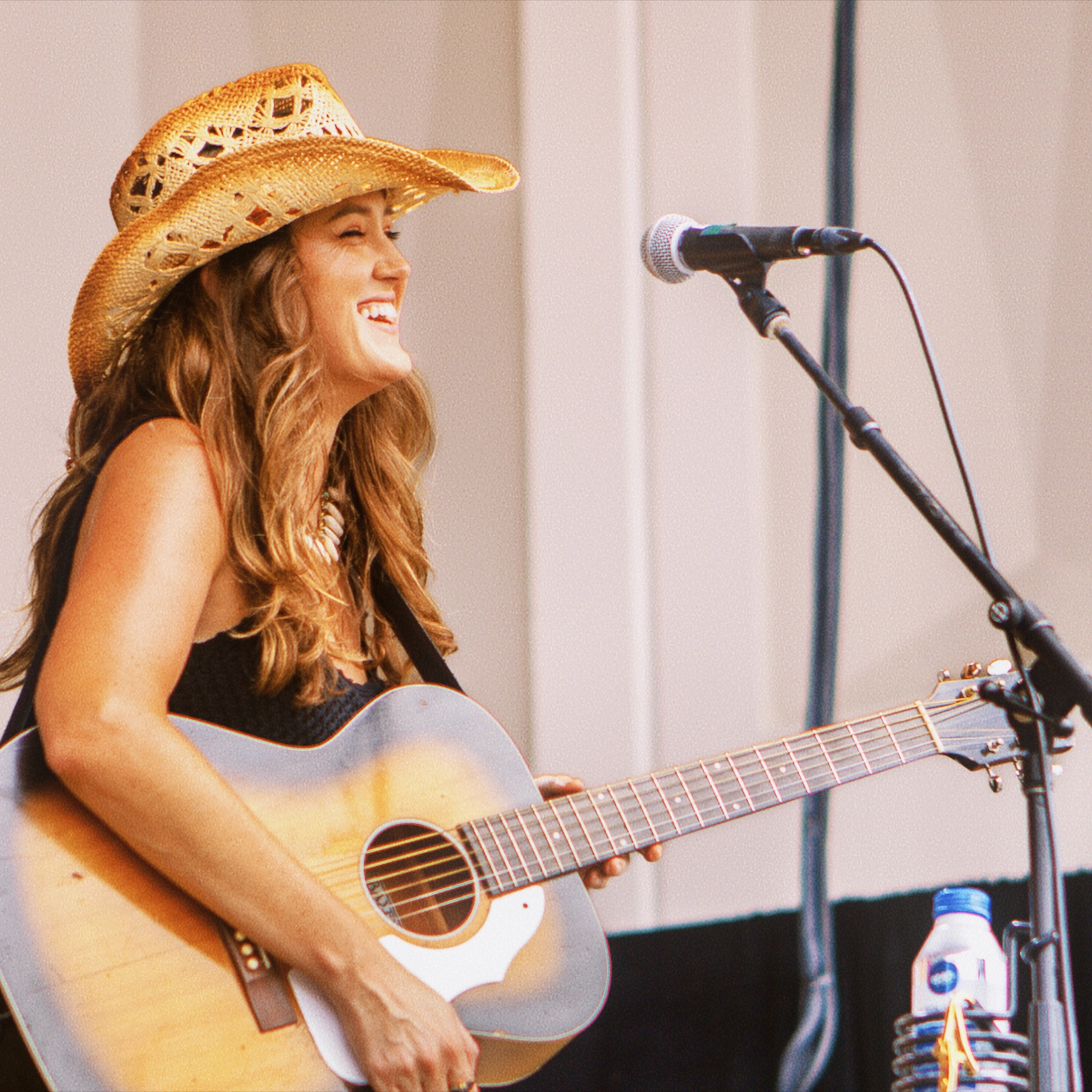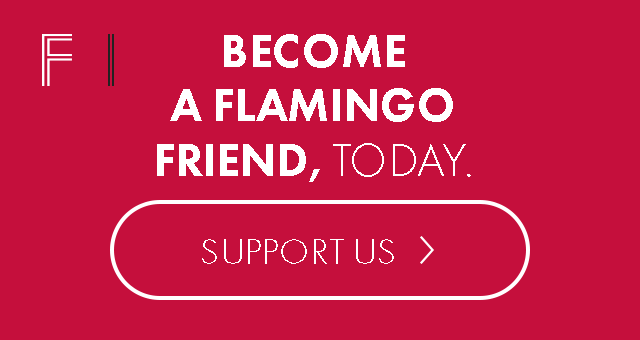by The Editors | January 8, 2024
Vintage Vogue: How Virginia Chamlee Mastered the Art of Thrifting
Virginia Chamlee, professional thrifter, author and antiques extraordinaire, sits down and shares thrifting tips and the secret to scoring a good find.

Virginia Chamlee has been on a treasure hunt her entire life, spending hours scouring thrift stores, estate sales and antique galleries. She’s constantly searching for her next big find, like a Yin and Yang two-piece ottoman she re-upholstered in velvety pink fabric or a wavy mirror that, if you look at it sideways, takes the shape of a dog bone—a remnant of the vet’s office from where it was salvaged. Chamlee, a Ponte Vedra-based artist, writer and author of the book “Big Thrift Energy” recently sat down with Flamingo to talk about the beginning of her antiquing career, Florida’s design influences and her tips and tricks to a successful trip to the thrift store.
How did you start thrifting?
Virginia Chamlee: My really, really early days were when I was young and my grandmother started this [antiquing] business. It first started out of our house and then later out of an art gallery in Jacksonville Beach. I would go to the antique gallery every day. I was really into fashion from a young age, and I started noticing that some of the brands and labels I would see in my [fashion] magazine, I would also see them in the antique mall. Like Karl Lagerfeld, I would see his vintage jewelry and it wasn’t very expensive. And then, when I was in college, I had a booth at an antique gallery briefly just as a way to have something to do. Later, it was really about collecting for me. I would buy what resonated with me. I started selling in my 20s on Cherish, when it first started. Initially, it was stuff that I loved and didn’t really have the space for and then became more, “Okay, I guess I can buy things to sell.” One of the skills I’ve learned over the past 10 years is to edit, curate and buy the things I love, not just things I think would sell.
What is the most compelling thing about shopping for vintage pieces?
VC: The sort of beauty, which is also something that might irritate people, about thrifting is that it’s very rare to find everything in one go. You kind of have to be doing this for months and years. But that allows your style to evolve and you to get a good idea of the mix. It’s more fun to collect over time and leave your home looking better as a result.
Why do you think Florida is such a good place for finding quality vintage pieces as opposed to other states?
VC: I think it’s really interesting how when you go thrifting or antiquing in a different state or city, you really learn so much about the culture of that place and the history, and that’s really reflected in Florida. I mean, we have a ton of Hollywood Regency style. There’s lots of ratan and brass because of the 1970s and ’60s, where Palm Beach Style became a thing … I think people were vacationing in Florida and they [saw] outside and organic materials, like seashells and palm fronds, and turned that into furniture and furnishings and decorating with it.

What cities or neighborhoods have been the most successful for you?
VC: I feel like any place where there’s a suburb. That’s honestly where you’re going to find really great thrifting. I think people have this idea that the big cities, LA and New York, are great because people have money there. And they are in a sense, but people know what stuff is worth, so it’s picked over. And here, these are people who have lived here. Maybe they moved here from another part of Florida, and they’ve been around since the 70s. Sometimes people think the new stores or the stores that are in affluent areas are the best, but I think one of the reasons Florida is so great is because we have so many suburbs.
Would you consider Florida a design hub? What areas specifically?
VC: In terms of areas where design is a really big part of the culture, Sarasota is an incredible area. There’s an amazing opportunity for architecture lovers, and you can take tours of amazing homes designed by Paul Rudolph and things like that. Some of those same architects, for instance, Paul Rudolph, have designed homes in Ponte Vedra, where I live. It’s not as front and center in Northeast Florida, unfortunately. You kind of have to seek it out. But that’s where you find the best treasures because when people aren’t as educated about it, they’re not looking for the same things I am. Miami is amazing for postmodern design and Art-Deco-influenced stuff. 30A is so fascinating to me for the design that’s in those communities. They’re planned communities, but their design is pretty incredible. In Orlando, there’s a lot of midcentury. Palm Beach, there’s a classic sort of Hollywood Regency vibe. I think there are pockets everywhere if you look.
Why is shopping for secondhand goods something people should care about?
VC: First and foremost, this is a really sustainable way to shop. You see all these big brands that are just churning out clothes, and they’re ending up in a landfill. But fast furniture is also a big problem. I buy stuff from IKEA and Target like everyone else, but I think the great thing about vintage is that you’re giving something a new life. It’s not just affordable and sustainable, it’s a great way to shop for trends. Everything you see on the floor at West Elm or Crate and Barrel is all kind of rooted in vintage design. A lot of times when you go thrifting, you can find the original version of that item. It’s something that wasn’t made in a factory, it was made by hand, and it’s going to stand the test of time. And it’s probably even cheaper to buy the original.
It also adds so much character to a room. For so long, design was all about being matchy-matchy. We would all go to the furniture store and buy the full bedroom set, like the matching bed and dresser and bedside tables. I think we’re moving away from that, which is really fun, because it’s so much more interesting for our homes to have a personality, have things from different [design] eras and different makers throughout.

What does a realistic thrifting trip look like?
VC: A lot of my friends are like, “I want to go thrifting with you!” And then they go with me and say, “This kind of sucks.” I get really in the zone, forego eating lunch and stay in places for a long time. It really is like you’re hunting for this stuff. People see on Instagram, “Look at this amazing thing I found!” and they think I’m just going into a thrift store like there were beaming lights on the piece. That’s not the case. I’m getting dirty, on my hands and knees, flipping tables over.
What can you tell us about the emotional side of the hobby?
VC: I think there’s something innate in us as humans where we really love finding buried treasure. Obviously, it’s fun to go into a beautiful store where everything’s laid out for you, and you don’t have to use your imagination. But it’s also cool to find things that are unexpected. It’s very rare you go in and say, “I’m looking for a wooden coffee table,” and find just that. You might find some crazy, midcentury abstract painting that’s more incredible than what you could have imagined. There’s a learning moment. I have learned and discovered so many artists and makers that I would have never known about.
How has living in Florida informed your personal style?
VC: It’s just a magical place. The cool thing about vintage shopping is you’re breathing new life into something and you’re living with all of these stories around you. I think Florida is a hotbed for weird and wonderful stuff, which is kind of my brand.
Special reporting by Kelsey Glennon.





